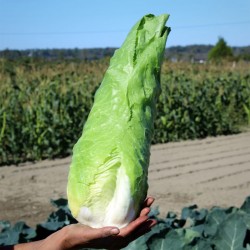Menu
-
MenuBack
- Home
-
Categories
-
-
Categories
-
Vegetable Seeds
-
Varieties by Country
- Varieties from Armenia
- Varieties from BiH
- Varieties from Croatia
- Varieties from France
- Varieties from Germany
- Varieties from Greece
- Varieties from Hungary
- Varieties from India
- Varieties from Italy
- Varieties from Japan
- Varieties from North Macedonia
- Varieties from Peru
- Varieties from Russia
- Varieties from Serbia
- Varieties from Slovenia
- Varieties from Spain
- Varieties from Thailand
- Varieties from Turkey
- Varieties from USA
- Tomato Seeds
- Corn Seeds
- Gourd family
- Bean family
- Cucumber Seeds
- Pepper Seeds
- Carrot family
- Onion family
- Lettuce Seeds
- Potato family
- Cabbage family
- Radish Seeds
- Beetroot family
- Watermelon Seeds
- Melon Seeds
- Cauliflower Seeds
- Sunflower family
-
Varieties by Country
- Fruit Seeds
- Chili - Habanero Seeds
- Medicinal Herb Seeds
- Climbing Plants Seeds
- Trees Bonsai Seeds
- Palm Seeds
- Ornamental Grasses Seeds
- Tobacco Seeds
-
Vegetable Seeds
-
-
-
-
- NEW PRODUCTS
- Create account
- Delivery - Payment
- FAQ
Last Product Reviews
Out of the two seeds, one germinated and the other one was dead and floatin...
By
 Riikka H on 07/03/2024
Riikka H on 07/03/2024
Verified Purchase
There are 28 products.
Showing 16-28 of 28 item(s)

Variety from Italy
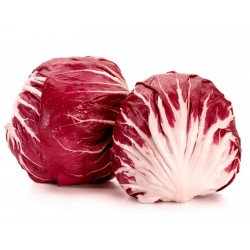
Radicchio - Chicory Seeds...
Price
€1.65
(SKU: VE 34 (1g))
Seeds Gallery EU,
5/
5
<h2><strong>Radicchio - Chicory Seeds ‘‘Red Verona‘‘</strong></h2>
<h2 class=""><span style="color: #ff0000;"><strong>Price for Package of 500 (1g) seeds.</strong></span></h2>
<div>Small, red, cabbage-like heads ready to pick in fall. Leaves are sharp-flavored, use sparingly in green salads. May also be sautéed, steamed or grilled with meats. Garden Hints: Do not plant too early in spring or plants may bolt (go to seed). In early fall, cut off all leaves above the crown. New growth in cool weather produces the small, red, cabbage-like heads.</div>
<div>Sun: Full Sun </div>
<div>Spread: 4 inches</div>
<div>Height: 6 inches</div>
<div>Days to Maturity: 90 days</div>
<div>Sowing Method: Direct Sow</div>
VE 34 (1g)


Giant plant (with giant fruits)
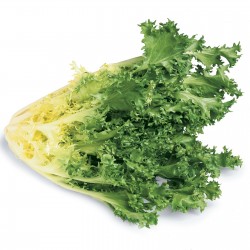
Endive Giant Seeds
Price
€1.65
(SKU: VE 187)
Seeds Gallery EU,
5/
5
<h2><span><em><strong><span style="text-decoration:underline;color:#000000;">ENDIVE GIANT SEEDS</span><br /></strong></em></span></h2>
<h3><span style="color:#ff0000;"><strong>Package of 100 seeds.</strong></span></h3>
<div>Beware! Once you acquire a taste for this interesting and attractive-looking salad plant, you will find salads based on the ubiquitous Lettuce insipid and dull. Although grown like Lettuce, it has the advantage that it will withstand without complaint both heat and a few degrees of frost. Best if blanched a few days before harvesting and - a personal opinion - tastes better with a home-made French dressing rather than salad cream out of a bottle. If you´ve never grown Endives, do give them a trial.</div>
VE 187 (100 S)

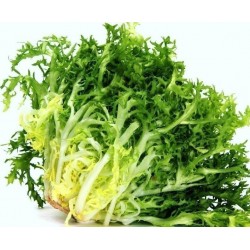
Endive 'De Ruffec' Salad Seeds
Price
€1.65
(SKU: VE 1)
Seeds Gallery EU,
5/
5
<!DOCTYPE html>
<html>
<head>
<meta http-equiv="Content-Type" content="text/html; charset=UTF-8" />
</head>
<body>
<h2><strong>Endive<strong> 'De Ruffec'</strong> Salad Seeds</strong></h2>
<h2><span style="color: #ff0000;"><strong>Package of 100 seeds. </strong></span></h2>
<div>Beware! Once you acquire a taste for this interesting and attractive-looking salad plant, you will find salads based on the ubiquitous Lettuce insipid and dull. Although grown like Lettuce, it has the advantage that it will withstand without complaint both heat and a few degrees of frost. Best if blanched a few days before harvesting and - a personal opinion - tastes better with a home-made French dressing rather than salad cream out of a bottle. If you´ve never grown Endives, do give them a trial.</div>
</body>
</html>
VE 1 (100 S)

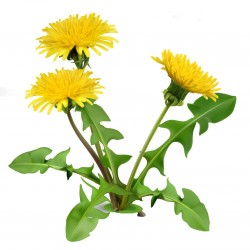
Common Dandelion Seeds...
Price
€1.85
(SKU: VE 196)
Seeds Gallery EU,
5/
5
<meta http-equiv="Content-Type" content="text/html; charset=UTF-8" />
<h2><strong>Common Dandelion Seeds Medical Herb (Taraxacum officinale)</strong></h2>
<h2><span style="color: #ff0000;"><strong>Price for Package of 50 seeds.</strong></span></h2>
<p>Taraxacum officinale, the common dandelion (often simply called "dandelion"), is a flowering herbaceous perennial plant of the family Asteraceae (Compositae).</p>
<p>It can be found growing in temperate regions of the world, in lawns, on roadsides, on disturbed banks and shores of water ways, and other areas with moist soils. T. officinale is considered a weed, especially in lawns and along roadsides, but it is sometimes used as a medical herb and in food preparation. Common dandelion is well known for its yellow flower heads that turn into round balls of silver tufted fruits that disperse in the wind called "blowballs" or "clocks" (in both British and American English).</p>
<p> </p>
<p><strong>Description</strong></p>
<p>Taraxacum officinale grows from generally unbranched taproots and produces one to more than ten stems that are typically 5–40 cm (2.0–15.7 in) tall, but sometimes up to 70 cm (28 in) tall. The stems can be tinted purplish, they are upright or lax, and produce flower heads that are held as tall or taller than the foliage. The foliage may be upright-growing or horizontally spreading; the leaves have petioles that are either unwinged or narrowly winged. The stems can be glabrous or sparsely covered with short hairs. Plants have milky latex and the leaves are all basal; each flowering stem lacks bracts and has one single flower head. The yellow flower heads lack receptacle bracts and all the flowers, which are called florets, are ligulate and bisexual. In many lineages, fruits are mostly produced by apomixis, notwithstanding the flowers are visited by many types of insects.</p>
<p> </p>
<p>The leaves are 5–45 cm (2.0–17.7 in) long and 1–10 cm (0.39–3.94 in) wide, and are oblanceolate, oblong, or obovate in shape, with the bases gradually narrowing to the petiole. The leaf margins are typically shallowly lobed to deeply lobed and often lacerate or toothed with sharp or dull teeth.</p>
<p> </p>
<p>The calyculi (the cuplike bracts that hold the florets) are composed of 12 to 18 segments: each segment is reflexed and sometimes glaucous. The lanceolate shaped bractlets are in two series, with the apices acuminate in shape. The 14–25 mm (0.55–0.98 in) wide involucres are green to dark green or brownish-green, with the tips dark gray or purplish. The florets number 40 to over 100 per head, having corollas that are yellow or orange-yellow in color.</p>
<p> </p>
<p>The fruits, called cypselae, range in color from olive-green or olive-brown to straw-colored to grayish, they are oblanceoloid in shape and 2–3 mm (0.079–0.118 in) long with slender beaks. The fruits have 4 to 12 ribs that have sharp edges. The silky pappi, which form the parachutes, are white to silver-white in color and around 6 mm wide. Plants typically have 24 or 40 pairs of chromosomes, while some have 16 or 32 pairs.</p>
<p> </p>
<p><strong>Uses</strong></p>
<p>While the dandelion is considered a weed by many gardeners and lawn owners, the plant has several culinary uses. The specific name officinalis refers to its value as a medicinal herb, and is derived from the word opificina, later officina, meaning a workshop or pharmacy.[37] The flowers are used to make dandelion wine,[38] the greens are used in salads, the roots have been used to make a coffee substitute (when baked and ground into powder) and the plant was used by Native Americans as a food and medicine.</p>
<p> </p>
<p><strong>Culinary</strong></p>
<p>Dandelions are harvested from the wild or grown on a small scale as a leaf vegetable. The leaves (called dandelion greens) can be eaten cooked or raw in various forms, such as in soup or salad. They are probably closest in character to mustard greens. Usually the young leaves and unopened buds are eaten raw in salads, while older leaves are cooked. Raw leaves have a slightly bitter taste. Dandelion salad is often accompanied with hard boiled eggs. The leaves are high in beta-carotene, vitamin C and iron, carrying more iron and calcium than spinach.[40][unreliable medical source?]</p>
<p> </p>
<p>Dandelion flowers can be used to make dandelion wine, for which there are many recipes.[41] Most of these are more accurately described as "dandelion-flavored wine," as some other sort of fermented juice or extract serves as the main ingredient.[42] It has also been used in a saison ale called Pissenlit (the French word for dandelion, literally meaning "wet the bed") made by Brasserie Fantôme in Belgium. Dandelion and burdock is a soft drink that has long been popular in the United Kingdom.</p>
<p> </p>
<p>Another recipe using the plant is dandelion flower jam. In Silesia and also other parts of Poland and world, dandelion flowers are used to make a honey substitute syrup with added lemon (so-called May-honey). Ground roasted dandelion root can be used as a non-caffeinated coffee substitute.</p>
<p> </p>
<p><strong>Herbal medicine</strong></p>
<p>Historically dandelion was prized for a variety of medicinal properties. It contains a wide number of pharmacologically active compounds.[44] Dandelion contains flavonoids including luteolin, apigenin, isoquercitrin (a quercetin-like compound), caffeic acid, and chlorogenic acid. Dandelion also contains terpenoids, triterpenes, and sesquiterpenes. Dandelion has been used as an herbal remedy in Europe, North America, and China.[44] "Empiric traditional application in humans of dandelion, in particular to treat digestive disorders, is supported by pharmacological investigations. ... Some results, e.g. concerning possible diuretic activity, are even contradictory and require a thorough reinvestigation."</p>
<p> </p>
<p>Dandelion has been used in herbal medicine in an attempt to treat infections, bile and liver problems, and as a diuretic.[44] Dandelion is used in herbal medicine as a mild laxative, for increasing appetite, and as a plant bitter for improving digestion.[45] The milky latex has been used as a mosquito repellent[46] and as a folk remedy to treat warts.</p>
<p> </p>
<p><strong>European dandelions</strong></p>
<p>Taraxacum officinale L. (dandelion) is a vigorous weed in Europe with diploid sexual populations in the southern regions and partially overlapping populations of diploid sexuals and triploid or tetraploid apomicts in the central and northern regions. These European dandelions can be divided into two groups. The first group reproduces sexually as do most seed plants. This group consists of dandelions that have a diploid set of chromosomes, and are sexually self-incompatible. Sexual reproduction involves a reduction of the somatic chromosome number by meiosis followed by a restoration of the somatic chromosome number by fertilization. Diploid dandelions have eight pairs of chromosomes, and meiosis is regular with normal pairing of homologous chromosomes at the metaphase I stage of meiosis.</p>
<p> </p>
<p>The second group consists of polyploid (mostly triploid) apomicts, meaning that both a viable embryo as well as a functional endosperm is formed without prior fertilization. In contrast to the sexual diploids, the pairing of chromosomes at metaphase I in triploid apomicts is strongly reduced. However pairing is still sufficient to allow some recombination between homologous chromosomes.</p>
<p> </p>
<p>Taraxacum officinale has many English common names (of which some are no longer in use), including blowball, lion's-tooth, cankerwort, milk-witch, yellow-gowan, Irish daisy, monks-head, priest's-crown and puff-ball;[25] other common names include, faceclock, pee-a-bed, wet-a-bed,[26] swine's snout,[27] white endive, and wild endive.</p>
<p> </p>
<p>Carl Linnaeus named the species Leontodon taraxacum in 1753. The current genus name Taraxacum derives possibly from the Arabic Tharakhchakon,[10] or from the Greek Tarraxos.[29] The common name dandelion comes from the French dent de lion, or "lion's tooth", in reference to the plant's jagged-edged leaves.</p>
<p> </p>
<p><strong>Ecology</strong></p>
<p>Taraxacum officinale is native to Europe and Asia,[30] and was originally imported to America as a food crop.[31] It is now naturalized throughout North America, southern Africa, South America, New Zealand, Australia, and India. It occurs in all 50 states of the USA and most Canadian provinces.[23] It is considered a noxious weed in some jurisdictions,[32] and is considered to be a nuisance in residential and recreational lawns in North America.[33] It is also an important weed in agriculture and causes significant economic damage because of its infestation in many crops worldwide.</p>
<p> </p>
<p>The dandelion is a common colonizer of disturbed habitats, both from wind blown seeds and seed germination from the seed bank.[34] The seeds remain viable in the seed bank for many years, with one study showing germination after nine years. This species is a somewhat prolific seed producer, with 54 to 172 seeds produced per head, and a single plant can produce more than 5,000 seeds a year. It is estimated that more than 97,000,000 seeds/hectare could be produced yearly by a dense stand of dandelions.[citation needed] When released, the seeds can be spread by the wind up to several hundred meters from their source. The seeds are also a common contaminant in crop and forage seeds. The plants are adaptable to most soils and the seeds are not dependent on cold temperatures before they will germinate but they need to be within the top 2.5 cm (1 in) of soil.</p>
<p> </p>
<p>While not in bloom, this species is sometimes confused with others, such as Chondrilla juncea, that have similar basal rosettes of foliage.[35] Another plant, sometimes referred to as fall dandelion, is very similar to dandelion, but produces "yellow fields" later.</p>
<p> </p>
<p><strong>Fossil record</strong></p>
<p>T. officinale has a fossil record that goes back to glacial and interglacial times in Europe.</p>
<p> </p>
VE 196 (50 S)


Variety from Serbia
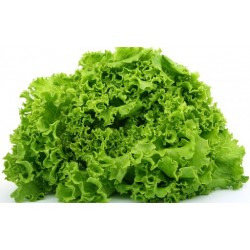
Kristalka winter salad seeds
Price
€1.85
(SKU: VE 135 (100 S))
Seeds Gallery EU,
5/
5
<h2><strong>Kristalka winter salad seeds</strong></h2>
<h2><strong><span style="color: #ff0000;" class="">Price for Package of 100 seeds.</span> </strong></h2>
<div>Kristalka winter salad is a favorite winter salad in Serbia, perfectly adapted to cold Serbian winter conditions. It tolerates winter well and in the spring forms compact, green, fragile leaf heads with a slightly red border on the leaf, which gives it an even more beautiful appearance. It is resistant to disease and an excellent choice for cultivation in the greenhouse, and open field cultivation.</div>
<script src="//cdn.public.n1ed.com/G3OMDFLT/widgets.js"></script>
VE 135 (100 S)

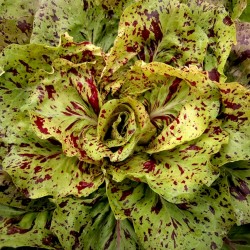
Sasco D'oro Castelfranco...
Price
€1.75
(SKU: MHS 158)
Seeds Gallery EU,
5/
5
<h2 class=""><strong>Sasco D'oro Castelfranco Endive Seeds</strong></h2>
<h2><span style="color: #ff0000;"><strong>Price for Package of 600-700 (1g) seeds.</strong></span></h2>
<p>Early variety, loose heads weighing 300-350 g. Vegetation lengths 65-70 days after transplanting. It has light green leaves with light purple and red patterns in the center of the head.</p>
<p>Endive is a two-year crop although it is produced and consumed as a one-year vegetable. It is grown because of the leaves, which form a rosette. Endive leaves can be smooth, weak or very wrinkled, wavy, round, strongly serrated in different colors. Endive cultivation is most prevalent in southern Europe.</p>
<p>Temperature</p>
<p>A temperature higher than 25 ° C reduces germination, which may be the reason for the uneven and poor sprouting of well-germinated seeds. Endive is a mild climate plant. For vegetative growth, medium temperatures of 15 to 18 ° C are optimal, minimum growth temperature is 7 ° C, and maximum 24 ° C. As soon as the rosette is near technological maturity, ie harvesting, a minimum temperature of -3 ° C can cause more damage, and at - 6 to -7 ° C the plant freezes completely. Moderate soil humidity of 60 to 80% of field water capacity and relative air humidity of about 70% are most favorable for plant growth. If high temperatures and low humidity occurred in the period immediately before harvesting, the rosette leaves become hard and coarse, with the more bitter matter. The bitter substances in the endives make it more resistant to lower temperatures, unlike the lettuce and crystalline salad.</p>
<p>Water</p>
<p>It has high water requirements, so an irrigation system (usually drip) is recommended.</p>
<p>Land</p>
<p>The salinity of the soil is less sensitive than the salad. It generally thrives well on all soil types, but better on medium to heavy soils provided they are deeply cultivated and even better fertilized, with neutral pH reactions of 6.5 - 7.2. Well, permeable soils are neutral and humus enriched. It is less sensitive to soil salinity. It does not tolerate direct fertilization with manure, and it succeeds best after a culture that was already heavily fertilized, such as cabbage and paper.</p><script src="//cdn.public.n1ed.com/G3OMDFLT/widgets.js"></script>
MHS 158 (1g)


Variety from Serbia
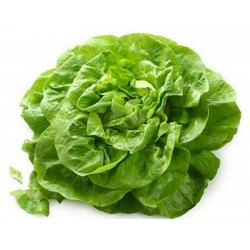
Head Lettuce Seeds...
Price
€1.45
(SKU: VE 5)
Seeds Gallery EU,
5/
5
<h2><strong>Head Lettuce Seeds Novosadska Majska</strong></h2>
<h2><span style="color:#ff0000;"><strong>Price for Package of 550 seeds (0,5g).</strong></span></h2>
<p>Novosadska Majska Novosadska Majska (named after the city of Novi Sad in Serbia) is a spring-headed cultivar, the leaves are tender, yellow-green, smooth and entire around the rim. It has a large and quite solid head, weighing 250-300 g. It is suitable for open field cultivation.</p>
<p>Lettuce (Lactuca sativa) is an annual plant of the daisy family, Asteraceae. It is most often grown as a leaf vegetable, but sometimes for its stem and seeds. Lettuce is most often used for salads, although it is also seen in other kinds of food, such as soups, sandwiches, and wraps; it can also be grilled.[3] One variety, the woju (莴苣), or asparagus lettuce (Celtuce), is grown for its stems, which are eaten either raw or cooked. In addition to its main use as a leafy green, it has also gathered religious and medicinal significance over centuries of human consumption. Europe and North America originally dominated the market for lettuce, but by the late 20th century the consumption of lettuce had spread throughout the world. World production of lettuce and chicory for calendar year 2017 was 27 million tonnes, 56% of which came from China.[4]</p>
<p>Lettuce was originally farmed by the ancient Egyptians, who transformed it from a weed whose seeds were used to create oil into an important food crop raised for its succulent leaves and oil-rich seeds. Lettuce spread to the Greeks and Romans, the latter of whom gave it the name lactuca, from which the English lettuce is ultimately derived. By 50 AD, many types were described, and lettuce appeared often in medieval writings, including several herbals. The 16th through 18th centuries saw the development of many varieties in Europe, and by the mid-18th century cultivars were described that can still be found in gardens.</p>
<p>Generally grown as a hardy annual, lettuce is easily cultivated, although it requires relatively low temperatures to prevent it from flowering quickly. It can be plagued by numerous nutrient deficiencies, as well as insect and mammal pests, and fungal and bacterial diseases. L. sativa crosses easily within the species and with some other species within the genus Lactuca. Although this trait can be a problem to home gardeners who attempt to save seeds, biologists have used it to broaden the gene pool of cultivated lettuce varieties.</p>
<p>Lettuce is a rich source of vitamin K and vitamin A, and a moderate source of folate and iron. Contaminated lettuce is often a source of bacterial, viral, and parasitic outbreaks in humans, including E. coli and Salmonella.</p>
VE 5 (550 S)

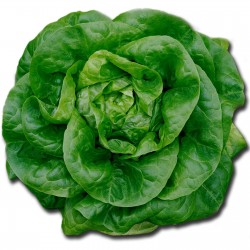
Butterhead lettuce seeds...
Price
€1.65
(SKU: PL 12)
Seeds Gallery EU,
5/
5
<h2><strong>Butterhead lettuce seeds Nansen Noordpool</strong></h2>
<h2><span style="color:#ff0000;"><strong>Price for Package of 550 seeds (0,5g).</strong></span></h2>
<p>Winter butterhead lettuce 'Nansen's Noordpool' is a medium early variety developing large, closed heads. The leaves that are densely packed are medium-large, smooth and crunchy. They take on a pale green color and have only slightly wavy edges. High quality of the greens and productivity are by far not the only advantage of this variety. </p>
<p>Nansen's Noordpool winters in the field without additional protection and produces a very early yield of heads that are equal in quality to those grown in the greenhouse. Its leaves are perfectly suited for direct consumption as they are firm, fresh and exceptionally tasty. They are rich in provitamin A, vitamin C, potassium, calcium and iron.</p>
PL 12 (550 S)


Giant plant (with giant fruits)

Variety from Russia

Variety from Bosnia and Herzegovina

Variety from Serbia

Variety from Greece

Variety from Italy

Coming Soon

Become our seed supplier
Price
€0.00
(SKU: )
Seeds Gallery EU,
5/
5
<!DOCTYPE html>
<html>
<head>
<meta http-equiv="Content-Type" content="text/html; charset=UTF-8" />
</head>
<body>
<h2><strong>Become our seed supplier</strong></h2>
<h2><strong>What does it take to become our seed supplier?</strong></h2>
<p>In order to become our supplier, you need to have a video and pictures of the fruits of the plants you offer us, with your personal details and a date on paper that will be clearly visible (with your name and email address you use for PayPal).</p>
<p>If it is a vegetable (tomato, pepper, cucumber ...) you need to know the exact name of the variety, because if you use any other name and we cannot find the information on the internet, then we are not interested in those seeds.</p>
<p>You will need to send us a smaller amount of seed (20) so that we can perform seed germination testing. After that, we can arrange a further purchase of the seed from you.</p>
<p>We make payments exclusively through PayPal (there is no other payment option).</p>
</body>
</html>

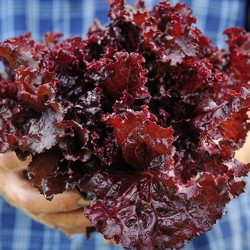
Merlot Cazard salad seeds
Price
€1.85
(SKU: VE 160 (1g))
Seeds Gallery EU,
5/
5
<h2><strong>Merlot Cazard salad seeds</strong></h2>
<h2><strong><span style="color: #ff0000;">Price for Package of <span>1g (approx. 950 seeds)</span> seeds.</span> </strong></h2>
<p>The characteristic Lollo type of salad intended for production in the open field is not a classic type because it does not form a head. The weight of the leaf mass is 200-250 g.</p>
<p>The color is medium burgundy and does not fade. It is easy to produce and is not a demanding variety. The leaves are without bitter substances, it is suitable for fresh as well as for mixed salad.</p>
VE 160 (1g)

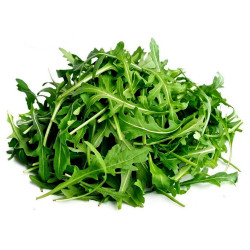
600 Seeds salad rocket,...
Price
€2.15
(SKU: MHS 120)
Seeds Gallery EU,
5/
5
<div id="idTab1" class="rte">
<h2><strong>Seeds salad rocket, roquette, rucola, rugula, colewort</strong></h2>
<h2><span style="color: #ff0000;"><strong>Price for Package of 600 seeds (1g).</strong></span></h2>
<p>Eruca sativa (syn. E. vesicaria subsp. sativa (Miller) Thell., Brassica eruca L.) is an edible annual plant, commonly known as salad rocket,[1] roquette, rucola, rugula, colewort, and, in the United States, arugula. It is sometimes conflated with Diplotaxis tenuifolia, the perennial wall rocket, another plant of the Brassicaceae family, which in the past was used in the same manner. Eruca sativa, which is widely popular as a salad vegetable, is a species of Eruca native to the Mediterranean region, from Morocco and Portugal in the west to Syria, Lebanon and Turkey in the east.[2][3] The Latin adjective sativa in the plant's binomial is derived from satum, the supine of the verb sero,[4] meaning "to sow", indicating that the seeds of the plant were sown in gardens. Eruca sativa differs from E. vesicaria in having early deciduous sepals.[5] Some botanists consider it a subspecies of Eruca vesicaria: E. vesicaria subsp. sativa.[5] Still others do not differentiate between the two.[6]</p>
<p>Other common names include garden rocket,[5] or more simply rocket (British, Australian, Canadian, South African and New Zealand English),[3] and eruca.[3] The English common name, rocket, derives from the French roquette, a diminutive of the Latin word eruca, which designated an unspecified plant in the Brassicaceae family (probably a type of cabbage).[7] Arugula, the common name now widespread in the United States, entered American English from non-standard (dialect) Italian. (The standard Italian word is rucola, a diminutive of the Latin "eruca"). The Oxford English Dictionary dates the first appearance of "arugula" in American English to a 1960 New York Times article by food editor and prolific cookbook writer, Craig Claiborne,</p>
<p>Eruca sativa grows 20–100 centimetres (8–39 in) in height. The leaves are deeply pinnately lobed with four to ten small lateral lobes and a large terminal lobe. The flowers are 2–4 cm (0.8–1.6 in) in diameter, arranged in a corymb in typical Brassicaceae fashion; with creamy white petals veined with purple, and with yellow stamens; the sepals are shed soon after the flower opens. The fruit is a siliqua (pod) 12–35 millimetres (0.5–1.4 in) long with an apical beak, and containing several seeds (which are edible). The species has a chromosome number of 2n = 22.</p>
<p><strong>Ecology</strong></p>
<p>Eruca sativa typically grows on dry, disturbed ground and is also used as a food by the larvae of some moth species, including the Garden Carpet moth. Eruca sativa roots are also susceptible to nematode infestation.</p>
<p><strong>Cultivation and history</strong></p>
<p>A pungent, leafy green vegetable resembling a longer-leaved and open lettuce, rocket is rich in vitamin C and potassium.[11] In addition to the leaves, the flowers, young seed pods and mature seeds are all edible.</p>
<p>Grown as an edible herb in the Mediterranean area since Roman times, it was mentioned by various classical authors as an aphrodisiac,[12][13] most famously in a poem long ascribed to Virgil, Moretum, which contains the line: "et veneris revocans eruca morantuem" ("the rocket excites the sexual desire of drowsy people").[14] Some writers assert that for this reason during the Middle Ages it was forbidden to grow rocket in monasteries.[15] It was listed, however, in a decree by Charlemagne of 802 as one of the pot herbs suitable for growing in gardens.[16] Gillian Reilly, author of the Oxford Companion to Italian Food, states that because of its reputation as a sexual stimulant, it was "prudently mixed with lettuce, which was the opposite" (i.e., calming or even soporific). Reilly continues that "nowadays rocket is enjoyed innocently in mixed salads, to which it adds a pleasing pungency".</p>
<p>Rocket was traditionally collected in the wild or grown in home gardens along with such herbs as parsley and basil. It is now grown commercially from the Veneto to Iowa to Brazil, and is available for purchase in supermarkets and farmers' markets throughout the world. It is also naturalised as a wild plant away from its native range in temperate regions around the world, including northern Europe and North America.[3][1] In India, the mature seeds are known as Gargeer.</p>
<p>Growing rocket in mild frost conditions stymies the growth of the plant, as well as turning the green leaves red.</p>
<p><strong>Uses</strong></p>
<p>Rocket has a pungent, peppery flavor that is exceptionally strong for a leafy green. It is frequently used in salads, often mixed with other greens in a mesclun. It is also used raw with pasta or meats in northern Italy and in western Slovenia (especially in the Slovenian Istria). In Italy, raw rocket is often added to pizzas just before the baking period ends or immediately afterwards, so that it will not wilt in the heat. It is also used cooked in Puglia, in Southern Italy, to make the pasta dish cavatiéddi, "in which large amounts of coarsely chopped rocket are added to pasta seasoned with a homemade reduced tomato sauce and pecorino",[20] as well as in "many unpretentious recipes in which it is added, chopped, to sauces and cooked dishes" or in a sauce (made by frying it in olive oil and garlic) used a condiment for cold meats and fish.[20] In the Slovenian Littoral, it is often combined with boiled potatoes,[21] used in a soup,[22] or served with the cheese burek, especially in the town of Koper.</p>
<p>A sweet, peppery digestive alcohol called rucolino is made from rocket on the island of Ischia in the Gulf of Naples. This liqueur is a local specialty enjoyed in small quantities following a meal in the same way as a limoncello or grappa.</p>
<p>In Brazil, where its use is widespread, rocket is eaten raw in salads. A popular combination is rocket mixed with mozzarella cheese (normally made out of buffalo milk) and sun-dried tomatoes.</p>
<p>In Egypt the plant is commonly eaten raw as a side dish with many meals, with ful medames for breakfast, and regularly accompanies local seafood dishes.</p>
<p>In West Asia and Northern India, Eruca seeds are pressed to make taramira oil, used in pickling and (after aging to remove acridity) as a salad or cooking oil.[23] The seed cake is also used as animal feed.</p>
</div>
<script src="//cdn.public.n1ed.com/G3OMDFLT/widgets.js"></script>
MHS 120 (1g)


Variety from Serbia
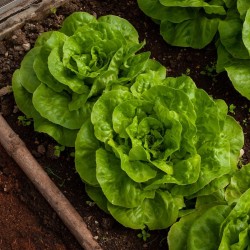
Butterhead Lettuce Seed Vuka
Price
€1.85
(SKU: VE 213 VS (1g))
Seeds Gallery EU,
5/
5
<div id="idTab1" class="rte">
<h2><strong>Butterhead Lettuce Seed Vuka</strong></h2>
<h2><span style="color: #f80000;"><strong>Price for Package of 1000 (1g) seeds.</strong></span></h2>
<p class="">An early Serbian butterhead spring head lettuce, the rosette is with laid leaves, the leaves are tender, light yellow-green in color, with weakly expressed ribs. The heads are well curled, firm, round, weighing 250-280 g. The flowering tree develops late, which enables the long use of lettuce.</p>
<p><strong>Seed sowing:</strong><strong> </strong>March to July<br><strong>Harvest salads:</strong> Beginning be<br><strong>Height:</strong> The lettuce attraction reaches on average 20 to 25cm<br><strong>Exposure:</strong> Halfshade</p>
<p><strong>Sowing instructions:</strong> Seed sowing August to September directly in place after any danger of frost is past, sow 1 cm from depth, water ground even in the event of rain. You can also start earlier in a shelter. Transplant after approximately 20 to 30 days. To help the formation of apple water young lettuces on the leaves in full sun. Cut lettuce ten weeks after sowing.</p>
<p><strong>Sowing distance:</strong> 25 x 30 cm between plants<br><strong>Minimum seed sowing temperature:</strong> 10°C<br><strong>Seed germination:</strong> 6 to 8 days<br><strong>Nutritional value:</strong> 15 Kcal for 100 gr.</p>
<p><strong>Net weight of seeds:</strong> 4 gr. = +/- 3200 seeds</p>
<p><strong>Companion Plants:</strong> Carrot, Radish, Strawberry, Cucumber.</p>
</div><script src="//cdn.public.n1ed.com/G3OMDFLT/widgets.js"></script>
VE 213 VS (1g)





